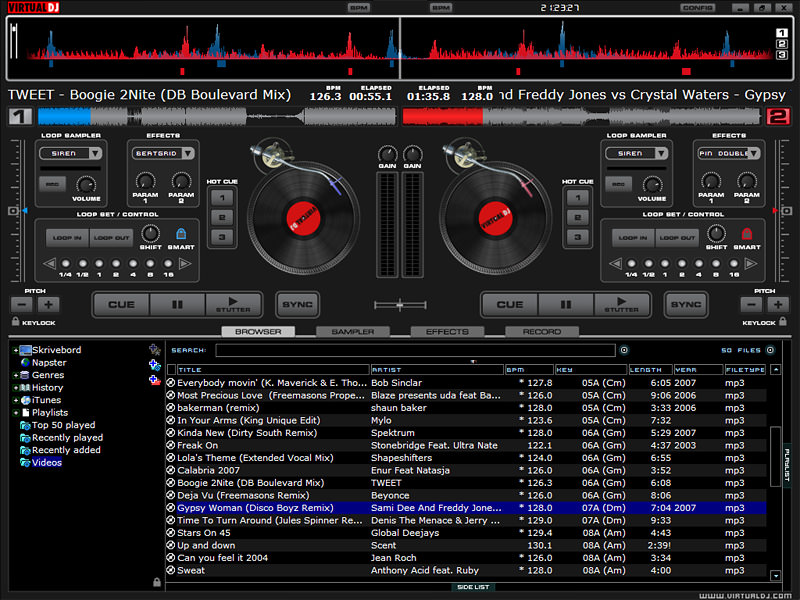Now that we've covered the merits of using a computer or not, let's delve deeper and examine three of the main programs used by computer DJ's.
TraktorAlong with Serato Scratch Live, Traktor is one of the best selling DJ programs. However, Traktor can be used with either real turntables or a computer controller; this versatility is what makes Traktor a leader in the world of virtual DJing.
Along with its' versatility, Traktor is extremely customizable. All the settings from audio output to pitch bend sensitivity anything you want to tweak or change is at the user's fingertips.
A picture of Taktor Scratch’s Interface:

Serato Scratch LiveSerato is praised for its simplistic interface and ease of use. However, unlike Traktor, Serato has to be used with real turntables or CDJ’s. The detrimental effect of having to use analogue signals, some say, is quickly made up in the stability Serato boasts over any other program
A picture of Serato’s interface:
 Virtual DJ
Virtual DJA far less expensive alternative to Traktor or Serato, Virtual DJ offers most of the same features for a cheaper price. It can be used with analogue or digital equipment, has plenty of customizability, and an intuitive interface. However, the program is often criticized for inaccurately reading the speed of songs and being unstable in a performance environment
Virtual DJ’s Interface:

A quick summary of each program
Traktor-
Pros- extremely customizable, can be used with analogue or digital equipment,
industry standard in Europe
Cons- criticized for some instability, steep learning curve
Serato-
Pros- simplicity, stability, industry standard in United States
Cons- can only be used with analogue equipment, have to have hardware
connected to run
Virtual DJ-
Pros- cheaper, somewhat customizable, colorful practical interface
Cons- instability, misreading tempo’s

Traktor v Serato v Virtual DJ?








